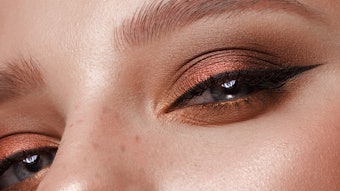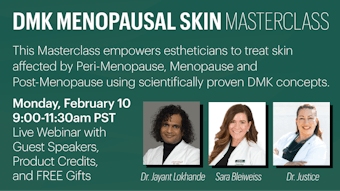
Abstract: Noninvasive aesthetic treatments can help practices offer patients solid benefits without always turning to surgery, so learning about the various offerings, as well as what treatments can be paired together and when, is a smart move for medical aesthetic professionals.
Patients consistently turn to their physicians and medical aesthetic professionals for the most effective products and treatment methods, and it is the professional’s responsibility to understand all of the options available. However, although individual treatments work well, it is often a combination of procedures and products that lead to the most dramatic patient outcomes.
One of the greatest benefits of the medical setting is the ability to offer patients a variety of products, procedures and technologies all at one location. Each treatment offers unique benefits, and when used in conjunction, they are capable of producing amazing results more rapidly than when used on their own. These types of results-oriented combination treatment plans ultimately lead to practice credibility, repeat business, patient referrals and an increased bottom line.
Topical daily care products
Visible aging, acne and hyperpigmentation are among the most common concerns in aesthetic medicine. While each of these conditions responds to different product pairings, certain ingredients are crucial to all daily care regimens, regardless of the skin condition being treated.
Sunscreen is the most important aspect of any regimen. A broad-spectrum sunscreen product must be applied each morning to prevent damage and maintain results. Choose an SPF of at least 15, and look for ingredients such as avobenzone, titanium dioxide, ecamsule or zinc oxide to ensure UVA and UVB protection. And always end in-office treatments with a sunscreen application to set a good example for patients.
Antioxidants are also crucial to healthy skin. These offer protection against cellular oxidation, which significantly contributes to several skin concerns, and while there are many available, some of the most beneficial antioxidant options are: resveratrol from grapes, soy isoflavones, epigallocatechin gallate (EGCG) from green tea, and tocopherol or tocotreinols (vitamin E). Consider applying an antioxidant topical product following professional treatments to decrease inflammation.
For more targeted issues, ingredients such as retinoids and vitamin C should be considered. Retinoids describe vitamin A derivatives such as retinol and retinoic acid. Retinoic acid is the bioavailable form of vitamin A; however, topical application of this prescription drug often leads to surface irritation. For this reason, many prefer retinol, which is a commonly used cosmeceutical ingredient that can be successfully converted into retinoic acid within the skin. Studies suggest both effectively increase cell turnover, inhibit melanogenesis, increase collagen and elastin synthesis, and reduce free radical damage.1
Vitamin C is a multifaceted topical agent capable of performing several functions within the skin. L-ascorbic acid is the bioavailable form of vitamin C, and 15–20% is excellent for daily collagen promotion, hyperpigmentation reduction, anti-inflammatory benefits and antioxidant protection.2,3 Like retinol, it is imperative that a vitamin C topical be stable. Look for anhydrous bases and encapsulation technology to ensure optimal results.
Chemical peeling
Chemical exfoliation has been used for centuries to reduce the appearance of skin wrinkling and discolorations. The application of acids or other caustic substances to the surface of the skin encourages desquamation and triggers a cascade of changes within the dermis and epidermis. Chemical peels range in depth from very superficial to deep, with the risk of complications increasing with the aggressiveness. Regardless of the depth, increased collagen synthesis, enhanced penetration of topical products and improved overall appearance is typical with chemical peels.
Superficial chemical peels induce epidermal exfoliation and include alpha hydroxy acids (AHA) such as lactic and glycolic acid, beta hydroxy acids (BHA) such as salicylic acid, and trichloroacetic acid (TCA) in percentages below 30. Blended chemical peels such as Jessner’s solutions (14% lactic acid, 14% salicylic acid and 14% resorcinol) also are typically considered superficial. Blended acid peels are particularly beneficial, as multiple ingredients are able to target several skin concerns simultaneously.4 Look for peels that include not only acids but also melanogenesis inhibitors such as hydroquinone, kojic acid and arbutin for a well-rounded exfoliating treatment capable of performing several functions.
Medium-depth peels are those that reach the papillary dermis and typically refer to 30–40% TCA. Deep chemical peels affect the upper reticular dermis and usually refer to phenol peels and TCA in percentages above 40. These types of treatments induce varying degrees of downtime and carry a significantly higher risk of complications than superficial chemical peels. Because of the inflammation involved with these treatments, they are only suitable for a narrow range of patients.5
Regular treatments with chemical peels can also significantly improve outcomes by enhancing the benefits of other rejuvenating procedures such as microdermabrasion, ultrasound, LED, laser and IPL, and topical daily care products. Patients should be prepped with products containing effective ingredients and melanogenesis inhibitors before and following in-office treatments to ensure optimal skin function.6
Microdermabrasion
Microdermabrasion offers mechanical exfoliation combined with vacuum pressure. This type of treatment physically removes skin cells through friction and abrasive media, typically aluminum oxide crystals, rather than chemical exfoliation. The vacuum suction delivered by the microdermabrasion handpiece increases blood flow throughout the treatment area and is thought to ultimately lead to an increase in collagen production. Enhanced blood flow is beneficial for many patients, including those with a sallow complexion, smokers and those seeking treatment for visible aging.7
One of the greatest benefits of microdermabrasion is its ability to promote deeper, more even penetration of corrective topical products. The superficial exfoliation provided by a microdermabrasion procedure will increase the benefits of any product applied post-treatment.8 Low percentage superficial peels may also be applied post-microdermabrasion for even greater penetration and benefits. Of course, the proper training in the selection of appropriate peels and products to use in conjunction with microdermabrasion, and the knowledge of when and with whom this level of treatment is best suited, is of the utmost importance.
Ultrasound
Ultrasound is sound with a frequency of more than 20,000 Hz, or cycles per second. Phonophoresis, also referred to as sonophoresis, is the therapeutic technique in which ultrasound waves are used to force topical products into tissue. This treatment uses low frequencies and is the most useful form of ultrasound application to the medical aesthetic professional.
Cavitation—the formation of gaseous bubbles in a liquid—is thought to be responsible for phonophoresis in the skin. Research shows cavitation of the lipid bilayer in the skin leads to increased permeability of keratinocytes,9 and the resulting enhanced penetration of corrective products contributes to faster results. Multiple ultrasound studies also have demonstrated an increase in human fibroblasts following treatments. This is important in wound healing and in the treatment of visible aging, as fibroblast cells stimulate the production of matrix proteins such as collagen and elastin.10
Light therapy treatments
LED, IPL and laser use light to trigger change in the skin, and, like other rejuvenation procedures, light therapy can be enhanced with the use of topical skin care products. The most important consideration when combining light therapy treatments with topical therapies is how they will impact the absorbance of the light into the tissue. The light’s electromagnetic energy must be attracted to and absorbed by a specific cellular component or target chromophore in the skin. Therefore, any colored product on the surface of the skin at the time of treatment has the potential to interrupt light absorption. The reflective nature of topical products could also interfere with treatment outcomes. For this reason, light therapy treatments should be administered on clean, dry skin.
LED devices offer a photobiochemical reaction or photomodulation. During photomodulation, a cell’s mitochondria is thought to be turned on, or illuminated, by the light. By illuminating mitochondria, the light is able to up regulate or down regulate the activity of these cells. The wavelength emitted by the diodes interacts with specific cellular components in the skin.11 LED is purported to have positive effects on acne, visible aging and wound healing. LEDs do not create any thermal damage in the skin, and treatments can be combined with virtually any topical products and treatments.
IPL devices deliver a broad-spectrum of visible light, ranging from 515–1,200 nanometers. Cut-off filters are used to determine the specific wavelengths of energy that are emitted from the handpiece, thus targeting a broad-spectrum of chromophores. IPL is a versatile treatment that allows for the reduction of hair, telangiectasias and solar lentigos, and IPL devices utilize heat and light to induce changes in the skin.12
Laser strengthens electromagnetic energy and focuses it as a monochromatic, coherent beam of light. Unlike IPL, laser devices emit only one wavelength. Lasers can be either selective, meaning the energy is absorbed by a specific chromophore within the skin and do not ablate the surface, or non-selective, when the target chromophore is water and all water-containing tissues are affected, leading to ablation. Regardless of whether skin is removed during treatment, all lasers create a significant amount of heat in the skin.13
The application of topical products during an IPL or laser procedure is appropriate and highly beneficial in many circumstances. Because of the amount of heat frequently involved, exfoliation methods are not usually recommended on the same day as laser and IPL treatments. Medical aesthetic professionals should apply anti-inflammatory skin care products post-treatment to soothe any discomfort, erythema and edema.
Chemical peels can also dramatically enhance the outcome of these light treatments, but they should be implemented in between IPL or laser procedures. Most device manufacturers recommend treatments every four weeks; therefore, chemical peels should typically be applied two weeks after each light treatment.
Offering safe and effective combinations
Combination therapy is a highly beneficial way to increase patient satisfaction and practice revenue. Physicians should evaluate not only the benefits of each device and product but also their ability to work well with other treatment methods. Ideal product and device manufacturers should provide ongoing education and support designed to enhance treatment results. Making educated product and machine choices will contribute to consistent patient outcomes, as well as help to set your practice apart from the competition.
REFERENCES
- ZD Draelos, Retinoids in Cosmetics, Cos Dermatol 18 (1 suppl) 3–5 (2005)
- S Pinnell, Y Huanshu, M Omar, et al, Topical L-Ascorbic Acid: Percutaneous Absorption Studies, Dermatol Surg 27 137–142 (2001)
- G Heber, B Markovic, and A Hayes, Anhydrous Topical Ascorbic Acid On Human Skin, J Cos Dermatol 5 150–156 (2006)
- JE Fulton, “Jessner’s Peels” 57–71 in JS Dover, M Alam and M Rubin, Chemical Peels, Elsevier, Inc., New York (2006)
- WE Roberts, Chemical Peeling in Ethnic/Darker Skin, Dermatol Therapy 17 196–205 (2004)
- MG Rubin, Manual of Chemical Peels Superficial and Medium Depth, Lippincott Williams & Wilkins, Philadelphia (1995)
- BM Freedman, E Rueda-Pedraza, and ASP Waddell, The Epidermal and Dermal Changes Associated with Microdermabrasion, Dermatol Surg 27 1031–1034 (2001)
- WR Lee, SC Shen, KH Wang, et al, Lasers and Microdermabrasion Enhance and Control Topical Delivery of Vitamin C, J Invest Dermatol 121 1118–1125 (2003
- RJ Hirsh and DH Dayan, Nonablative Resurfacing, Facial Plastic Surg 20 57–61 (2004)
- J McCulloch, Ultrasound in Wound Healing, Wound Care Information Network, www.medicaledu.com/ultrasnd.htm (Accessed May 2010)
- RA Weiss, DH McDaniel, RG Geronemus, et al. Clinical trial of a novel nonthermal LED array for reversal of photoaging: clinical, histologic, and surface profilometric results, Lasers in Surg and Med 36 85–91 (2005)
- S Stangl, I Hadshiew, and W Kimmig, Side effects and complications using intense pulsed light (IPL) sources, Med Laser App 23 15–20 (2008)
- H Jones, Nurse-Administered Laser in Dermatology, Nursing Clinics of N Amer 42 393–406 (2007)










